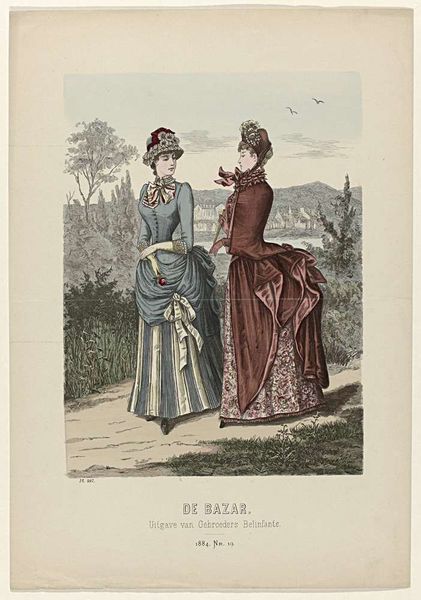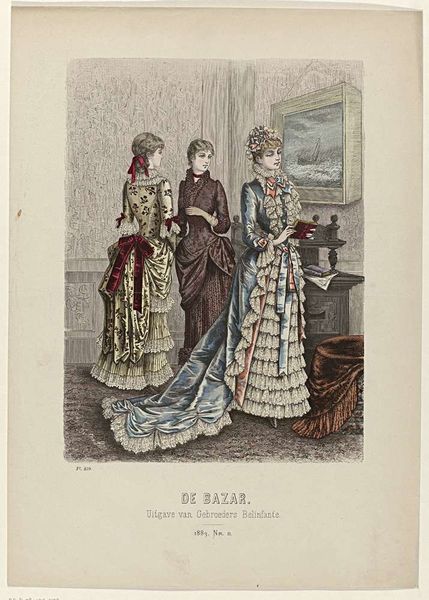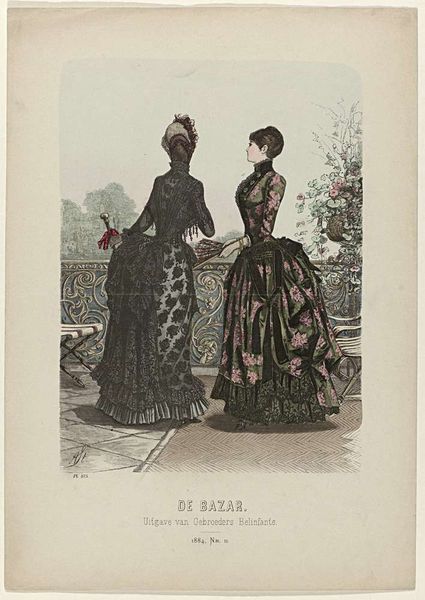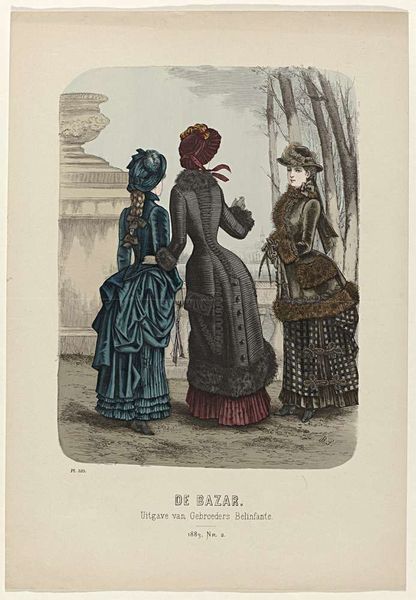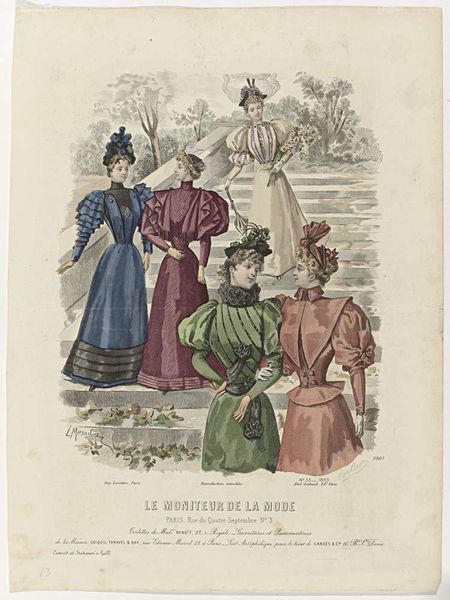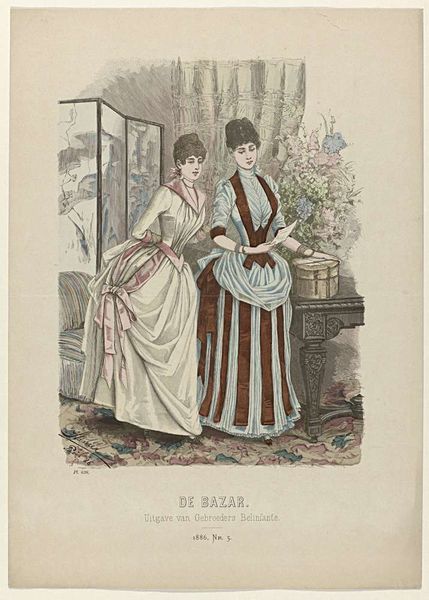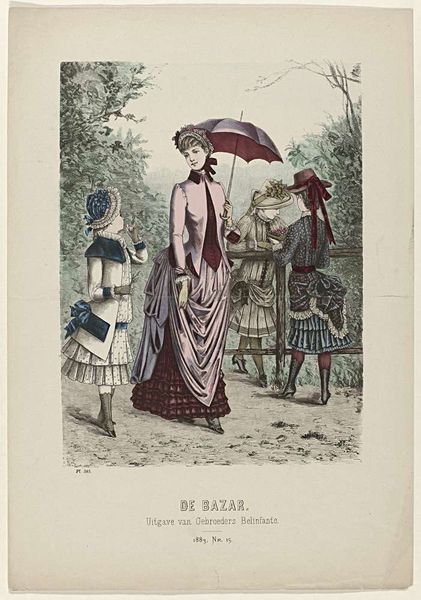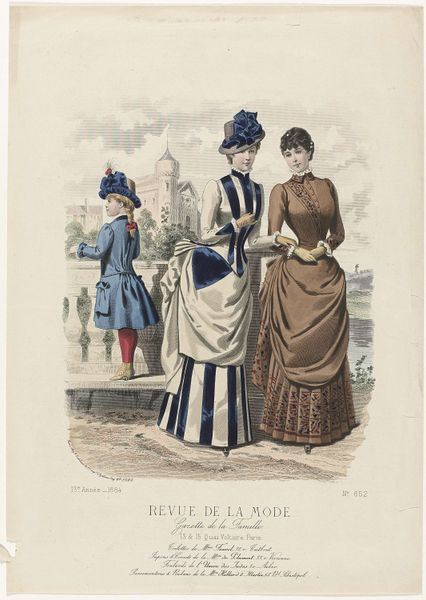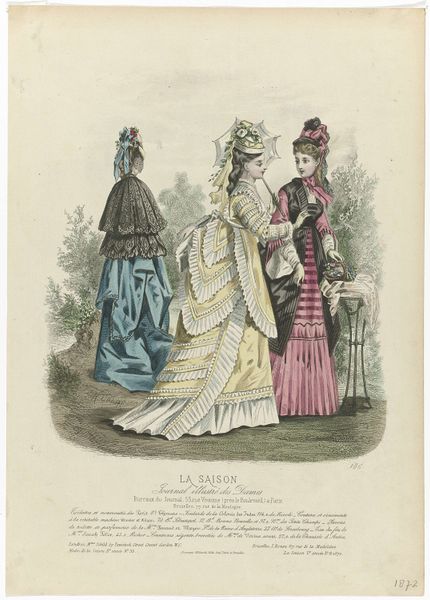
graphic-art, print
#
portrait
#
graphic-art
# print
#
genre-painting
#
dress
Dimensions: height 382 mm, width 270 mm
Copyright: Rijks Museum: Open Domain
Editor: Here we have “De Bazar, 1886, Nr. 9, Pl. 644,” a print from 1886 by an anonymous artist. It depicts women's fashion of the time, and it strikes me as quite…restrictive. How do you interpret this work, especially given its context? Curator: I see this image as a loaded representation of 19th-century bourgeois ideals, anxieties and aspirations. Consider how fashion itself functions here: the elaborate dresses aren’t just aesthetic choices, but powerful signifiers of social standing, economic power, and above all, the constructed identity of women. Editor: So, it’s less about clothing and more about the social code? Curator: Precisely. Note how these women, encased in their garments, are subtly confined and constricted. Are they really free in this public park, or is their freedom dictated by the gaze of society? The image implicitly questions the performative nature of femininity at the time. Editor: I see that now! The details, like the parasol and the child holding hands, emphasize societal roles. Is it suggesting women were confined to such domestic and social performance? Curator: I believe so. The artist makes subtle suggestions, that call to attention the prescribed roles women were expected to perform. These are less candid depictions and more about visual constructs intended for privileged audiences. Editor: Thank you. Now that you mention this, I view the picture very differently. I had originally understood the composition through its artistic elements, but I am able to appreciate that the meaning is within a socio-historical context. Curator: I think that's very well observed, and I appreciate the conversation!
Comments
No comments
Be the first to comment and join the conversation on the ultimate creative platform.

